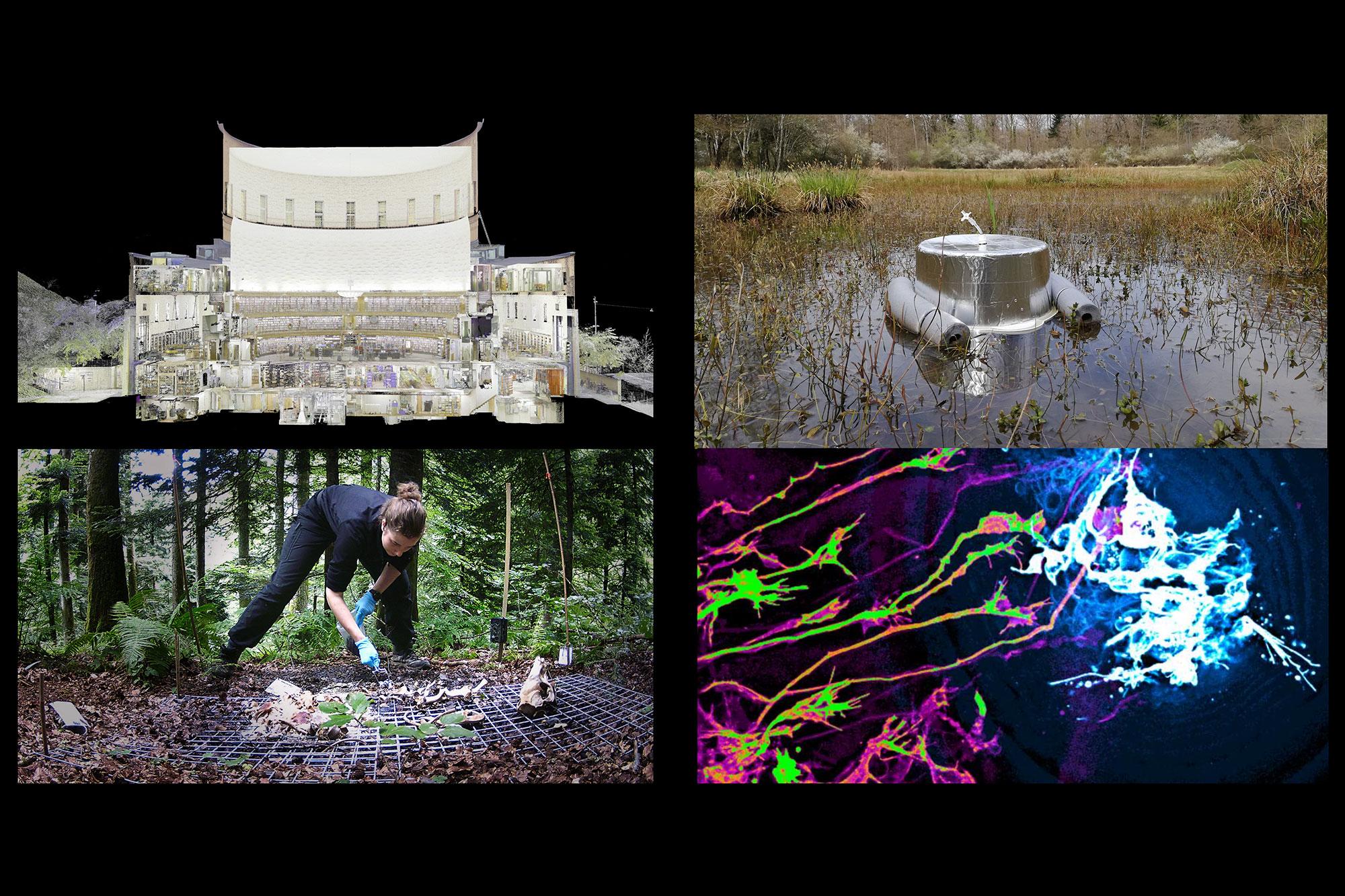Scientific images that ask questions

The SNSF Scientific Image Competition casts an unconventional light on research conducted in Switzerland. The jury for the 2022 edition has recognized 14 works that provoke, amaze and often amuse. The winning images will be exhibited at the Biel/Bienne Festival of Photography in May 2022.
A virtual rendering of a historic building, the dance of neurons, a floating saucer and decomposing cadavers are just some of the recipients of the four first prizes and ten distinctions awarded by the international jury of the 2022 SNSF Scientific Image Competition. Organised by the Swiss National Science Foundation, the competition attracted 334 entries from which the jury selected the winners. But all the works exemplify the variety of research conducted in Switzerland and its capacity to surprise, challenge and fascinate.
Translating data with sensitivity and poetry
First prize in the “Object of study” category went to a visualisation of a 3D model of a historic building. Created by Patrick Fleming and Petronella Mill of ETH Zurich, the image comprises a cloud of 15 billion points and captivated the jury with its “astounding level of detail that projects the public into the metaverse”.
Lara Indra of the University of Bern snagged first prize in the “Women and men of science” category for a shot of a decomposed pig cadaver taken by a surveillance camera while she was studying the process of decomposition in the forest. The jury declared the work an “authentic and uncontrived glimpse of fieldwork”. Says Indra, “What I like about this photo is that for once, the camera wasn’t photographing a fox or a mouse, but me doing my work”.
A photo of an intriguing “floating saucer” used to trap greenhouse gas emissions emitted by ponds was awarded first prize in the “Locations and instruments” category. Taken by Julie Fahy, a PhD candidate at the Haute école du paysage, d’ingénierie et d’architecture in Geneva, the image’s “good framing and interesting reflections on the water surface as well as a slightly humorous take” impressed the jury as a reminder that “research feeds on ingenuity and benefits from low-key, possibly less-than-perfect makeshift devices”. For Fahy, “photography is a great tool for documenting both our work and the evolution of ponds over time. It also serves to show our field activities in a tangible way and to communicate our results”.
The “Video loops” winner is a time-lapse of microscopic images showing the growth of neurons taken by Alexandre Dumoulin of the University of Zurich. The jury judged it “a beautiful visualisation of the complexity of dynamical biology”.
In addition, 10 distinctions were awarded to works depicting, among other things, the inside of an elephant’s trunk, the reproductive life of plants and mathematical “mountains”.
Over 2300 images and videos accessible online
All the entries to the competition – more than 2300 to date – are available in an online gallery on Flickr. Images from 2018 onwards can be used for non-commercial purposes and by the media under a Creative Commons licence.
The winning images and videos for 2022 will be on display at the Biel/Bienne Festival of Photography from 6 to 29 May 2022. A guided tour with the researchers in attendance will take place on 12 May 2022.
The jury
The president of the jury is Lars Lindemann, head of photography at GEO (Germany).
The other members of the jury are:
- Emmanuel Ferrand, mathematician, Sorbonne University (France)
- Emmanuelle Giacometti, director of L’Espace des Inventions (Switzerland)
- Cécile Lestienne, editorial director of Pour la Science and Cerveau & Psycho (France)
- Alexander Sauer, photographer (Switzerland)